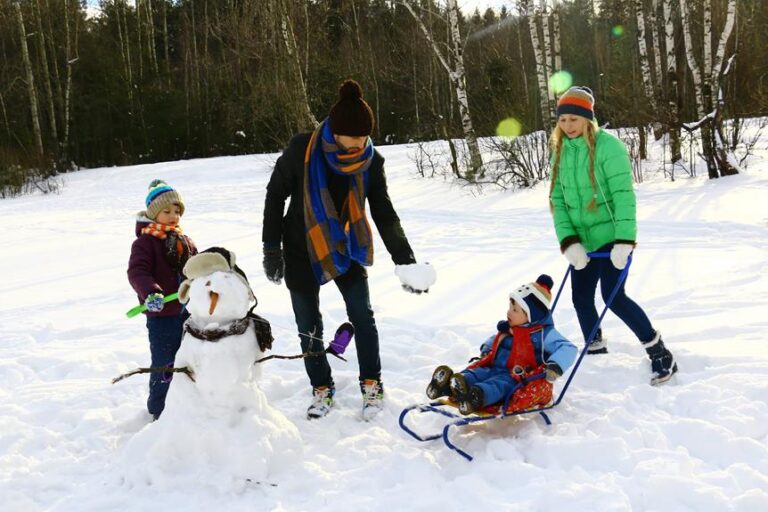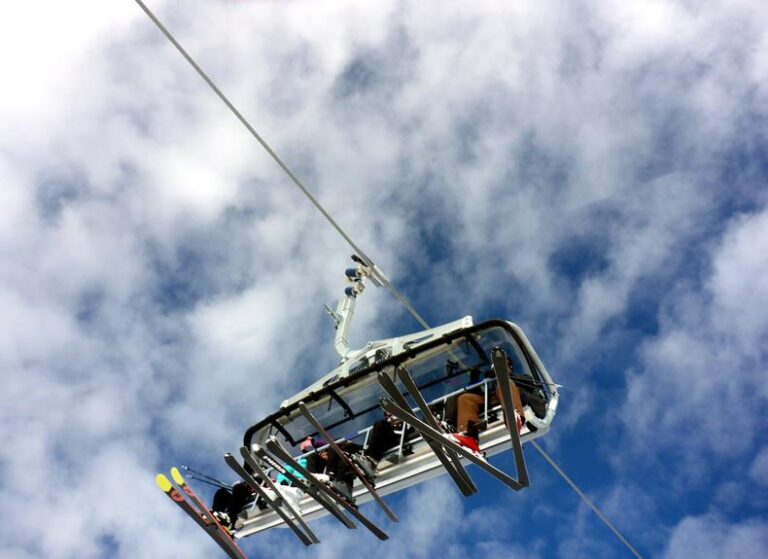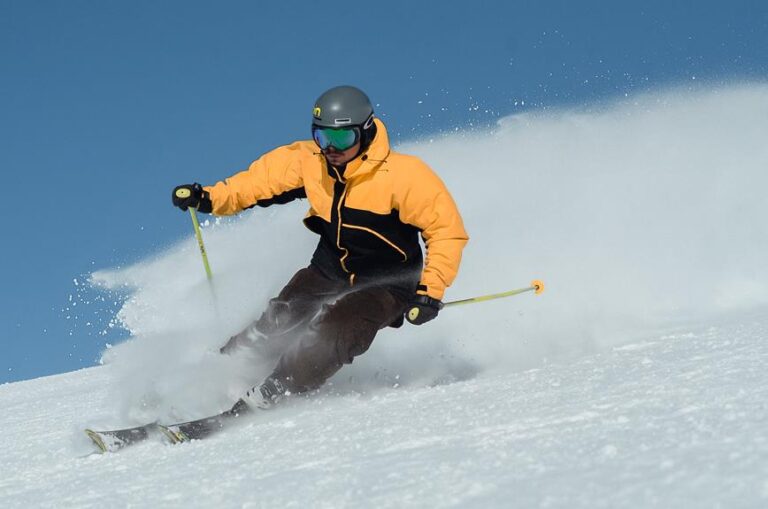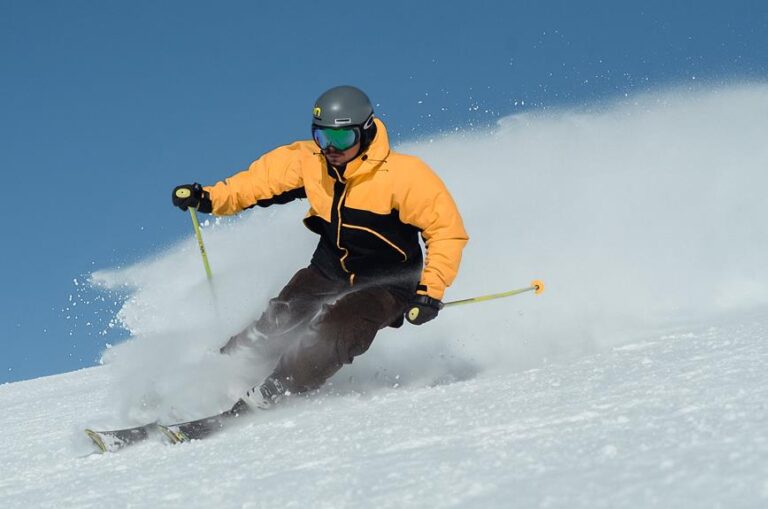Do Ski Boots Run Big or Small – Hidden Gems Uncovered
Are you struggling to determine whether ski boots run big or small? Well, you're not alone. In fact, studies have shown that nearly 50% of skiers find it challenging to find the right size ski boots.
But fear not, as I'm here to shed some light on this perplexing issue. When it comes to ski boots, there are several factors that influence their fit, making it difficult to give a straightforward answer.
So, if you're curious to know more about ski boot sizing and how to find the perfect fit, keep reading. You'll discover some valuable tips and insights that will help you navigate this complex world of ski boots.
Common Ski Boot Sizing Misconceptions
One common misconception about ski boot sizing is that all ski boots run either big or small, but in reality, sizing can vary between different brands and models. Ski boot sizing isn't as straightforward as using traditional shoe size conversions. It's crucial to use the Mondopoint measurement system for accurate sizing.
When choosing ski boots, it's important to consider how the boots fit your feet, as fit issues can greatly affect your skiing experience. The best ski boot is the one that fits your feet properly and provides the necessary support and control.
To determine the correct size, start by measuring your foot using the Mondopoint scale, which measures the length of your foot in centimeters. Remember, your foot measures may not align with your shoe size. Once you have your measurements, consider factors such as boot volume, shell fits, and boot last.
Boot volume refers to the interior space of the boot, with options ranging from narrow to wide. Shell fits determine how the boot feels around your foot, including aspects such as tightness and pressure points. Lastly, the boot last refers to the width of the footbed, with different lasts available to accommodate various foot shapes.
It's important to note that ski boot sizing can also differ based on your skiing style. If you're a new or casual skier, a comfort fit may be suitable, providing a more relaxed and roomy feel. On the other hand, experienced skiers often prefer a performance fit, which offers a snugger and more precise fit for enhanced control and responsiveness on the slopes.
To ensure the best possible fit, it's recommended to seek assistance from in-house bootfitters. These experts can guide you in finding the right size and make customized adjustments to the boot to address any fit issues you may have. Remember, a properly fitting ski boot is essential for maximizing your comfort, performance, and overall enjoyment on the mountain.
Factors That Influence Ski Boot Fit
When it comes to finding the perfect ski boot fit, there are several factors that can influence your comfort and performance on the slopes.
First and foremost, ski boot size is crucial. Ski boots are sized using the Mondo sizing system, which measures foot length in centimeters. It's important to accurately measure your foot length to ensure you're getting the right size. A proper fitting boot is essential for comfort and control while skiing.
Another factor to consider is the boot fit. The ski boot last, which determines the width at the ball of the foot, plays a significant role in finding the right ski boot. It's recommended to visit a boot fitter who can help determine the best fit for your foot shape and size. They'll take into account the length and width of your foot to find a boot that provides optimal comfort and performance.
Boot flex is another important factor. The flex refers to the stiffness of the boot and can vary depending on your skiing ability and style. A boot with a higher flex is stiffer and provides more control, while a lower flex offers more comfort and flexibility. Finding the right flex for your skiing style is crucial for a great skiing experience.
Additionally, ski boot shells can be heat molded to provide a custom fit. This process involves heating the shell to soften it, then molding it to the shape of your foot. Heat molding can help alleviate pressure points and provide a more comfortable fit.
Lastly, don't forget about the importance of ski socks. Wearing proper ski socks can significantly impact your boot fit. Look for socks that are specifically designed for skiing, as they're often made with moisture-wicking materials and provide cushioning in key areas.
Tips for Finding the Right Ski Boot Size
To find the right ski boot size, follow these essential tips.
First, make sure you know your shoe size as a starting point. Keep in mind that ski boots usually fit smaller than regular shoes, so you may need to go up a size or two.
It's also important to consider the sizing system used for ski boots, which is called Mondo sizing.
Next, when trying on ski boots, aim for a snug fit. Your boots should feel tight around your foot, especially around the ball of the foot. However, they shouldn't be painfully tight.
To find the best boot for you, try on different brands and models to see which ones fit larger or smaller. Remember to wear the same socks you'll be wearing while skiing, as this can affect the fit.
Additionally, consult with in-house bootfitters for a custom fit. They can help you find the right size and make any necessary adjustments to ensure your ski boots provide the comfort and support you need on the slopes.
Understanding Ski Boot Volume and Last Width
When finding the right ski boot size, it's important to consider not only the length and snugness of the boot, but also understand the ski boot volume and last width. These factors play a crucial role in determining the overall fit, comfort, and performance of the ski boots.
Here's what you need to know about ski boot volume and last width:
- Last width: The last width refers to the width at the ball of your foot. It's measured in millimeters and typically ranges from 92 to 103 millimeters. Choosing the right last width is important for a comfortable fit and proper range of motion.
- Foot volume and instep height: When selecting the last width, consider your foot volume and instep height. Higher volume boots are suitable for those with a high instep or high arch. This ensures a better fit and prevents discomfort during skiing.
- Manufacturer variations: It's important to note that ski boot sizing and volume may vary between manufacturers. To find the right fit, always refer to the specific brand's size guide and consult with a professional boot fitter if needed.
Understanding ski boot volume and last width is crucial for finding the perfect fit. By considering your foot volume, instep height, and the variations between manufacturers, you can ensure maximum comfort and performance on the slopes.
Notable Features to Consider in Ski Boots
Consider the important features of ski boots to ensure a proper fit and optimal performance on the slopes.
When it comes to ski boots, sizing can vary between boot manufacturers, so it's crucial to refer to specific brand size guides and pay attention to mondo sizing or Mondopoint. This measurement system is essential for accurate ski boot sizing and can help you find the right fit.
Another notable feature to consider is the boot flex. Flex ratings indicate how stiff or soft a boot is, and it's important to match the flex to your skiing style.
Additionally, shell size is crucial for finding the right fit. When standing, your foot shouldn't touch the outer edges of the shell. It's also important to test the forward lean of the boot to ensure a snug fit.
Lastly, seeking assistance from in-house boot fitters can provide a more precise and custom fit. They can help you understand ski boot volume, instep height, and other important factors. Remember to wear the same socks that you'll be skiing in for an accurate fit.
Frequently Asked Questions
Should I Size up or Down for Ski Boots?
For a proper fitting ski boot, start by measuring your foot and considering your sizing preferences. Try on different sizes, consider boot flex, and consult with a professional. Remember to account for sock thickness and make necessary boot adjustments for a comfortable and performance-oriented fit.
How Do I Know What Size Ski Boots to Buy?
When buying ski boots, it's important to find the proper fit. Consider factors like foot length, width, and arch length, as well as the differences between brands. Try them on before buying to avoid common sizing mistakes and ensure a snug, comfortable fit.
Is Ski Boot Supposed to Be Smaller Then Shoe Size?
Ski boots should be smaller than your regular shoe size for a better fit and control. Consider comfort vs. performance and the width of the boots. Find the right size by leaving a small space at the back and seek professional assistance for a customized fit.
Should the Top of Your Ski Boots Be Tighter or Looser?
For optimal performance, the top of your ski boots should be snug, providing proper support and control. However, if you prioritize comfort, a looser fit may be better. Consider customization options and adjust buckles/straps accordingly.
Conclusion
In conclusion, finding the right size ski boots can be challenging due to variations between manufacturers. It's best to use the Mondopoint measurement system for accurate sizing.
Additionally, considering your skiing style is important when choosing the fit of your boots. Comfort Fit boots are suitable for new or casual skiers, while Performance Fit boots are ideal for experienced skiers.
Consulting with a boot fitter is recommended for a precise and custom fit.






